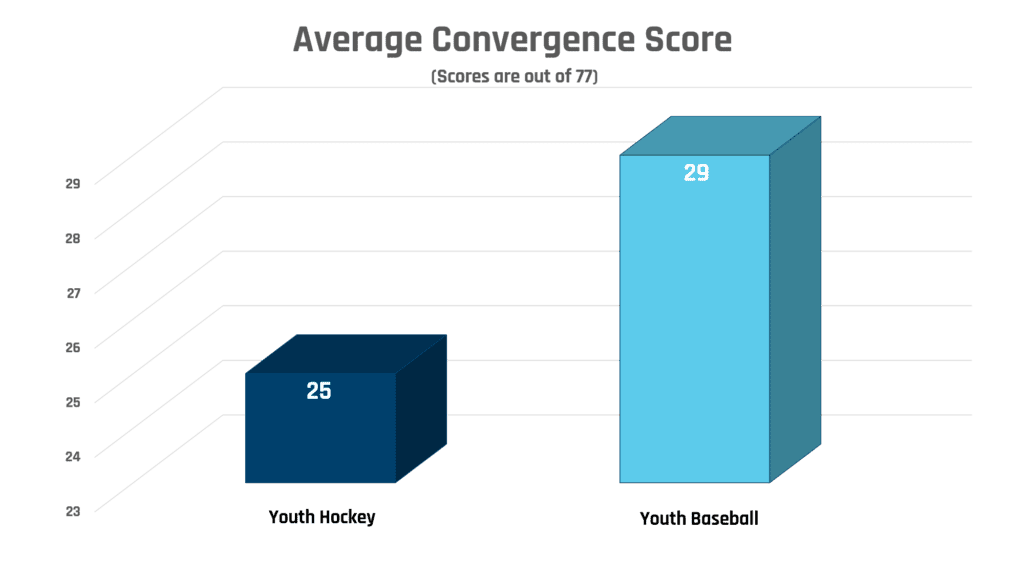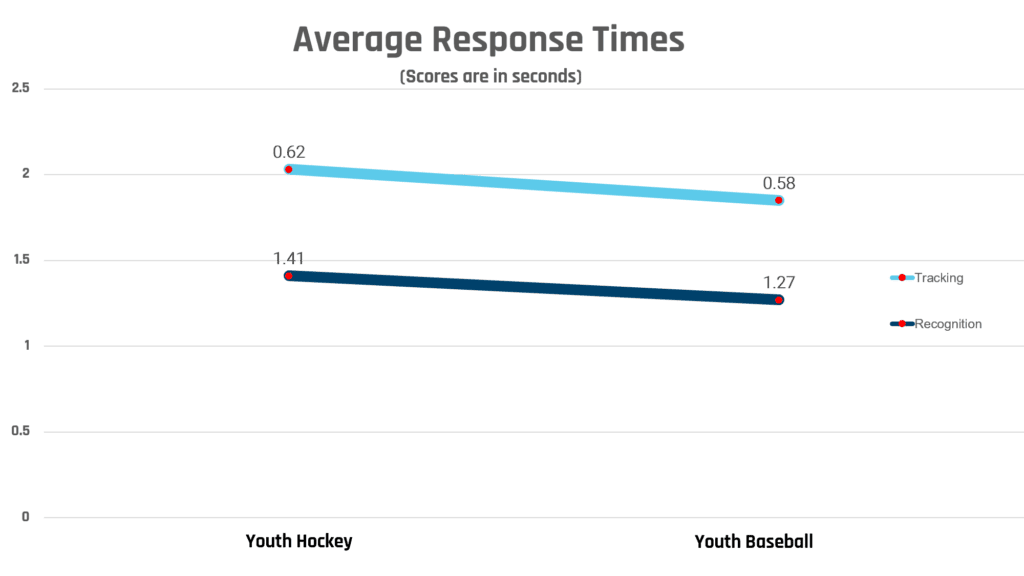Working with youth hockey and baseball organizations, Vizual Edge has been able to collect hundreds of scores from players in both sports. The numbers below represent the average scores for youth hockey and baseball players between the ages of 13 -18, based on their Vizual Edge visual assessments.

Due to the nature of both sports, baseball and hockey players have different visual processing demands which are evident with our research among over 2,000 youth players.
The biggest differences we have seen thus far in youth hockey and baseball athletes are related to their convergence scores and recognition/tracking response times.

Convergence is the ability to focus on objects in close-proximity (incoming pitches, shots, passes). The higher the convergence score, the better the athlete is at focusing on objects in close proximity. Youth baseball players have 16% better convergence scores (29) than youth hockey players (25). Baseball players are used to consistently focusing on an object (ball) coming towards them, which requires their eyes to constantly converge on the ball, in order for them to see and make contact with the ball.
As we take a look at both recognition and tracking scores for youth hockey & baseball players, we see quite a big difference in both areas. Recognition is a player’s ability to quickly and accurately respond to a series of visual targets (i.e. pitch type, shot tendencies, opponent’s structure, and positioning). Having only milliseconds to process an incoming pitch and decide whether or not to swing, baseball players need to have quick processing skills. The table above shows that youth baseball players have 10% quicker recognition response times than youth hockey players.

Another important processing skill for both hockey and baseball athletes is tracking. Tracking allows you to follow an object while continuously monitoring all other aspects of the game. A simple example of this in baseball is an outfielder's ability to locate and track a fly ball, whereas, in hockey, tracking is key for monitoring a developing play and locating the puck following a save. Our database shows that youth baseball players have 6% quicker tracking response times than hockey players.

Another important skill in both hockey and baseball is divergence. Divergence is the ability to focus on objects in the distance, or moving away from the athlete. Here we see that both groups of athletes have near-identical divergence scores. Divergence is key for a hockey player's passing ability, but also important for a baseball hitter's ability to locate the ball out of the pitcher's hand.
Learn more about the core-six visual skills in hockey & baseball.